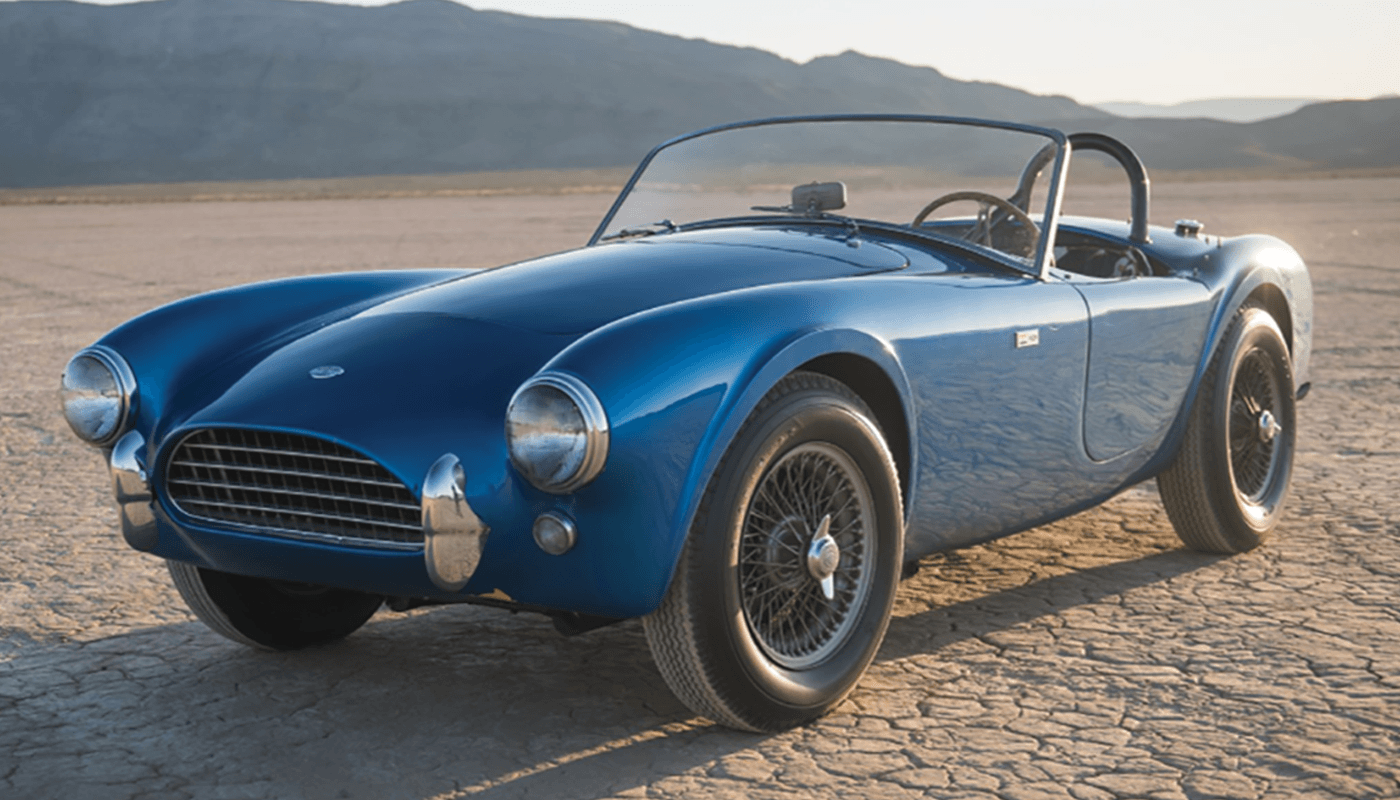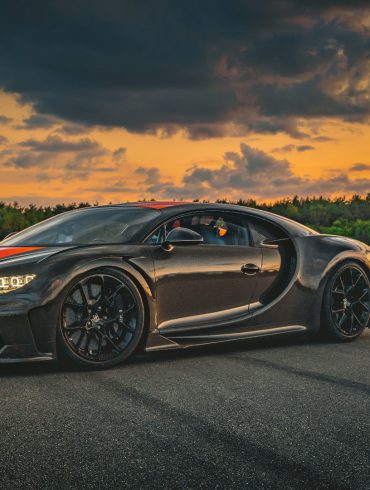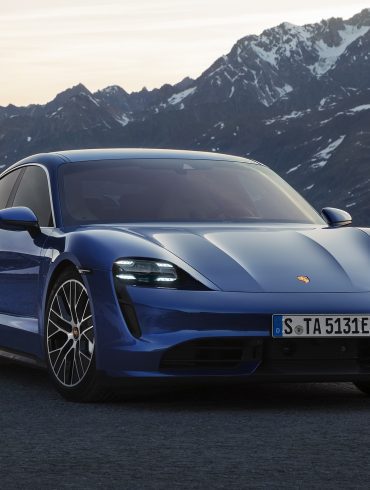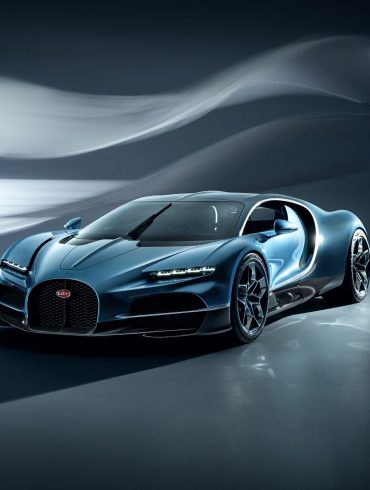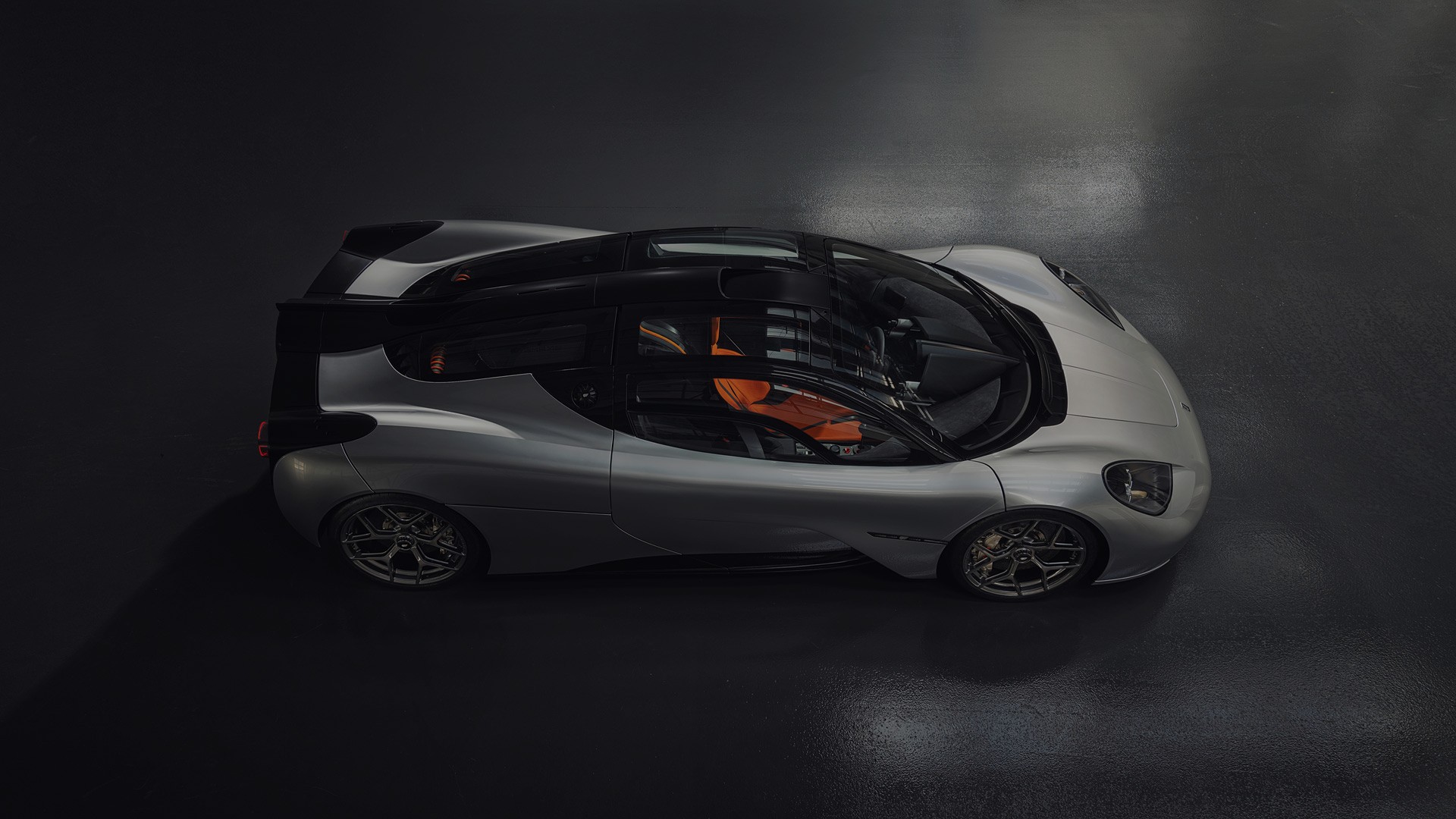1960s 0-60 & Quarter Mile Times
1960s Automotive Acceleration & Performance Data
Welcome to the ultimate guide to 0-60 mph and quarter mile times for 1960s cars! This page is your go-to resource for the most accurate, comprehensive, and easily accessible performance statistics of classic vehicles from the 1960s. Whether you're a vintage car enthusiast, a historian, or simply fascinated by automotive history, our meticulously curated database offers unparalleled insights into the acceleration and speed of these timeless machines. Explore the remarkable performance of 1960s cars.
1960s Acceleration (0-60 mph & Quarter Mile Times)
1960s 0-60 mph and quarter-mile acceleration times. Narrow down your search via the filters.
You are trying to load a table of an unknown type. Probably you did not activate the addon which is required to use this table type.
The Eleven Fastest Cars of the 1960s
The Quickest Cars of the 1960s Ranked
The 1960s were a landmark decade for the automotive industry, characterized by rapid advancements in engine technology, design innovation, and a fierce competition for performance supremacy. This era is often celebrated as the golden age of muscle cars, with American manufacturers leading the charge in creating high-performance vehicles that captured the public's imagination.
In the United States, the 1960s saw the rise of the muscle car, a genre defined by powerful V8 engines and aggressive styling. Chevrolet and Ford were at the forefront of this movement. Chevrolet introduced the Camaro and the second-generation Corvette, both of which became icons of American automotive culture. The Ford Mustang, launched in 1964, revolutionized the market with its blend of performance, style, and affordability, creating a new segment known as the "pony car." Ford's introduction of the Shelby GT350 and GT500 further pushed performance boundaries, combining racing pedigree with street-ready power. Chrysler also made significant contributions with the Dodge Charger and the Plymouth Barracuda, both equipped with the formidable Hemi V8 engine, known for its immense power and performance on the drag strip.
In Europe, automotive progress was marked by a focus on refined engineering, aerodynamics, and racing success. Ferrari continued to dominate with models like the 250 GTO and the 365 GTB/4 Daytona, which combined sleek designs with high-revving V12 engines. These cars not only excelled on the racetrack but also became symbols of luxury and performance. Aston Martin, with its DB5, became a cultural icon, partly thanks to its association with the James Bond franchise. The DB5 featured advanced technology for its time and a powerful straight-six engine that provided impressive performance. Jaguar, meanwhile, introduced the E-Type, renowned for its stunning design and exceptional performance. The E-Type's combination of a lightweight body and a powerful inline-six engine made it one of the most celebrated sports cars of the decade.
The 1960s also saw significant advancements in engine technology and design. Fuel injection systems became more widespread, improving efficiency and power delivery. Innovations in materials and aerodynamics led to lighter, faster, and more agile vehicles. The decade's emphasis on performance was also reflected in motorsports, where brands like Ford achieved legendary status with their victories at the 24 Hours of Le Mans, particularly with the GT40, which ended Ferrari's dominance in endurance racing.
Overall, the 1960s were a dynamic and transformative decade for the automotive industry. American and European manufacturers pushed the limits of performance and design, creating some of the most iconic and revered vehicles in automotive history. The advancements made during this period laid the groundwork for future innovations and cemented the legacy of the muscle car and the high-performance sports car in the hearts of enthusiasts around the world.
1. 1969 McLaren M6GT
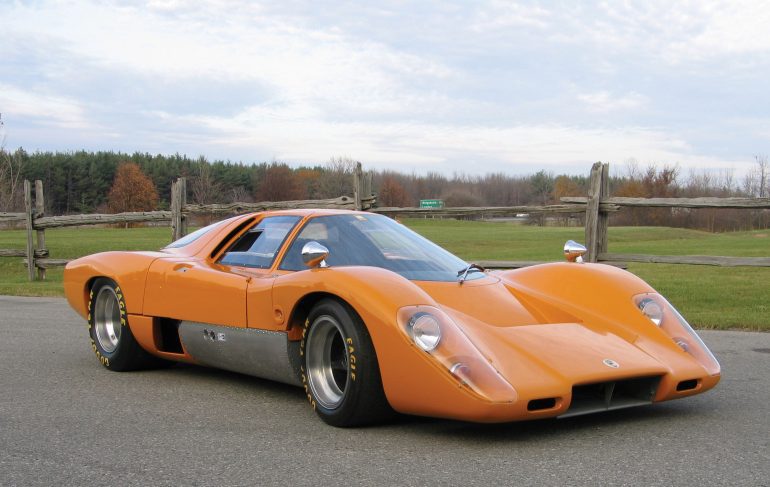
0 - 60: 3.2 seconds / Quarter Mile: 12.9 seconds
Summary
The 1969 McLaren M6GT is a legendary sports car that holds a significant place in McLaren's history as their first attempt at a road-going supercar. Conceived by Bruce McLaren himself, the M6GT was intended to be the fastest and most advanced road car of its time. Its design, with its low-slung body, gullwing doors, and mid-engine layout, was a testament to McLaren's racing pedigree and innovative spirit.
Underneath its sleek fiberglass body, the M6GT housed a Bartz-tuned Chevrolet 5.7-liter V8 engine. This powerful engine produced 370 horsepower, which was quite impressive for its era. Coupled with a lightweight chassis and aerodynamic design, the M6GT could achieve a top speed of 165 mph and accelerate from 0 to 60 mph in just 3.2 seconds. These figures were groundbreaking at the time, making the M6GT one of the fastest cars in the world.
The M6GT's performance wasn't just about raw power; it was also about agility and handling. Its racing-derived suspension and lightweight construction allowed it to corner with precision and confidence. Unfortunately, the M6GT never reached full production due to Bruce McLaren's untimely death in 1970. However, it paved the way for future McLaren road cars, including the iconic F1, and its legacy lives on as a symbol of the brand's unwavering commitment to performance and innovation.
2. 1962 Shelby Cobra 260 "CSX2000"
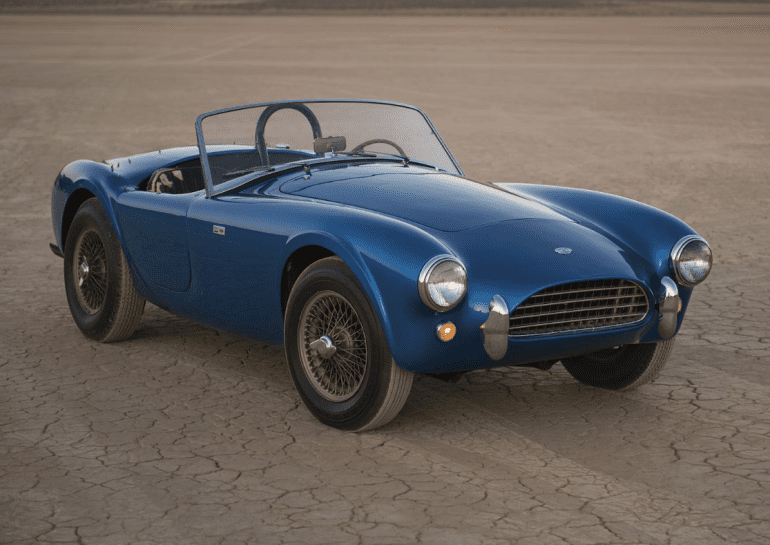
0 - 60: 4.2 seconds / Quarter Mile: 13.8 seconds
Summary
The 1962 Shelby Cobra 260 "CSX2000" is a legendary car that marked the birth of the iconic Cobra model line and the beginning of a successful partnership between Carroll Shelby and AC Cars. As the first-ever Cobra prototype, CSX2000 holds a special place in automotive history, representing a turning point in American sports car development.
Under its sleek and minimalist body, the CSX2000 housed a 260 cubic inch (4.2-liter) Ford Windsor V8 engine, a lightweight and powerful powerplant that was a significant departure from the Bristol engines used in the AC Ace. This engine, paired with a four-speed manual transmission, propelled the Cobra from 0 to 60 mph in a brisk 4.2 seconds, an impressive figure for its time. Its top speed was reported to be 153 mph, demonstrating its performance potential.
The CSX2000's performance wasn't just about straight-line speed. Its lightweight chassis, independent suspension, and disc brakes on all four corners provided nimble handling and exceptional stopping power. The car's balanced weight distribution and responsive steering made it a joy to drive on both the road and the track.
While the CSX2000 was a prototype, it laid the foundation for the production Cobra models that would follow. Its innovative combination of a lightweight British chassis and a powerful American V8 engine proved to be a winning formula, resulting in a series of legendary sports cars that continue to be revered by enthusiasts today. The CSX2000's legacy is one of innovation, performance, and a passion for pushing boundaries in the automotive world.
3. 1965 Shelby Cobra 427
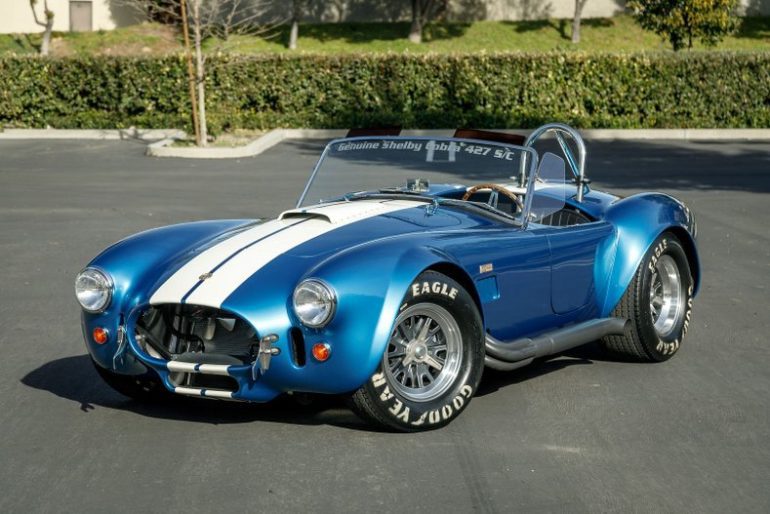
0 - 60: 4.3 seconds / Quarter Mile: 12.2 seconds
Summary
The 1965 Shelby Cobra 427 was a legendary sports car that embodied the raw power and visceral driving experience of the muscle car era. It was a monstrous machine, built to dominate both on the road and the racetrack, with its iconic design and legendary performance capabilities.
Under its long, curvaceous hood, the Cobra 427 housed a massive 427 cubic inch (7.0-liter) V8 engine, a powerhouse that produced a staggering 425 horsepower and 480 lb-ft of torque in its street version. The competition version boasted an even more impressive 485 horsepower. This raw power, channeled through a four-speed manual transmission, propelled the Cobra 427 from 0 to 60 mph in 4.3 seconds, a mind-boggling figure for its time. Its top speed varied depending on the configuration, with the competition version reaching an astonishing 185 mph.
The Cobra 427's performance wasn't just about straight-line speed. Its lightweight chassis, coil-over suspension, and four-wheel disc brakes provided exceptional handling and agility, allowing it to carve through corners with confidence. However, its immense power and rear-wheel drive layout demanded respect and skill from the driver, making it a challenging but rewarding car to master.
The Cobra 427's iconic design, with its wide fenders, flared nostrils, and side-exit exhausts, has become synonymous with American muscle. Its legacy as a performance legend lives on, captivating car enthusiasts and collectors alike with its raw power, unfiltered driving experience, and timeless design.
4. 1964 Pontiac Tempest GTO 389 Hardtop
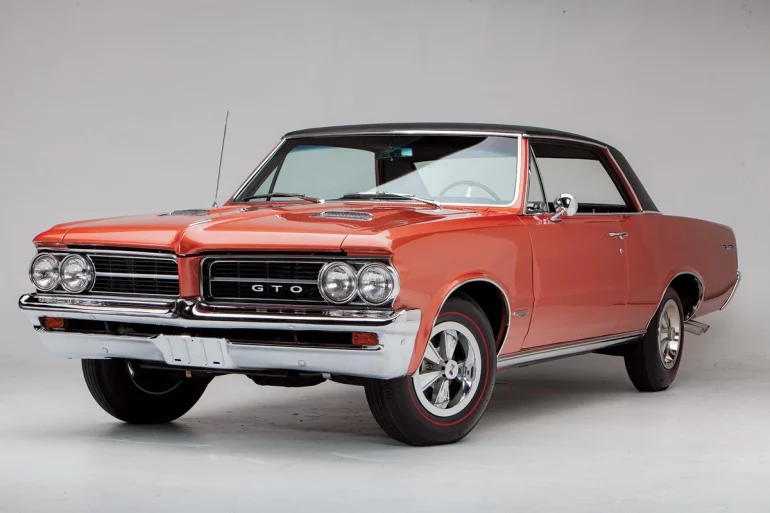
0 - 60: 4.6 seconds / Quarter Mile: 13.1 seconds
Summary
The 1964 Pontiac Tempest GTO 389 Hardtop is widely considered the genesis of the American muscle car era. It was a groundbreaking vehicle that combined a powerful V8 engine with a mid-sized platform, offering exhilarating performance at an affordable price. Its success sparked a revolution in the automotive industry, inspiring other manufacturers to follow suit and leading to the creation of numerous iconic muscle cars.
Under the hood, the Tempest GTO 389 Hardtop boasted a 389 cubic inch V8 engine, which was available in two configurations. The standard version produced 325 horsepower and 428 lb-ft of torque, while the optional Tri-Power setup, featuring three Rochester two-barrel carburetors, bumped the output to an impressive 348 horsepower. Paired with a four-speed manual transmission, the GTO 389 could sprint from 0 to 60 mph in a 4.6 seconds.
The GTO's performance wasn't just about straight-line speed. It also featured a heavy-duty suspension, wide track, and responsive steering, which provided surprisingly good handling for a muscle car of its era. While not as nimble as smaller sports cars, the GTO 389 could hold its own on winding roads and deliver a satisfying driving experience. Its aggressive styling, with its twin hood scoops and stacked headlights, further enhanced its appeal, making it a true icon of the muscle car era.
5. 1967 Chevrolet Corvette Sting Ray 427
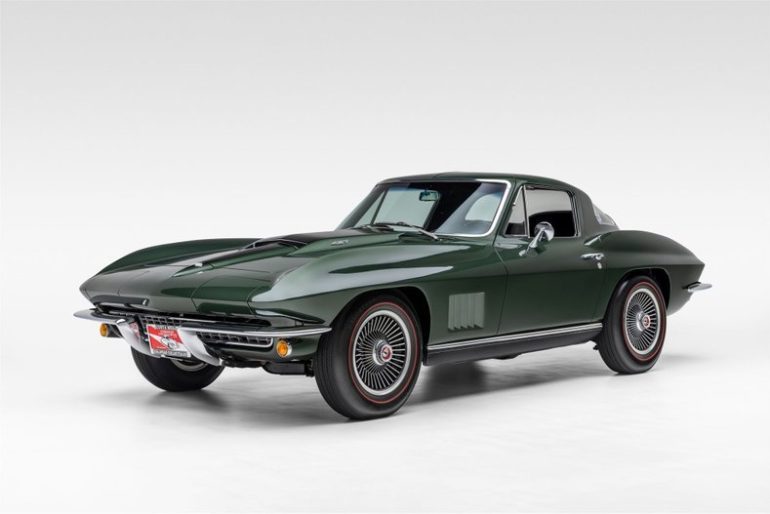
0 - 60: 4.7 seconds / Quarter Mile: 12.8 seconds
Summary
The 1967 Chevrolet Corvette Sting Ray 427 was the pinnacle of American muscle car performance in its era. This legendary sports car, with its striking design and monstrous engine, embodied the raw power and driving excitement that captivated enthusiasts around the world.
Under the hood, the Corvette Sting Ray 427 housed a massive 427 cubic inch (7.0-liter) V8 engine, available in several configurations ranging from 390 to 435 horsepower. The most potent variant, equipped with triple two-barrel carburetors and a high-performance camshaft, churned out a jaw-dropping 435 horsepower and 460 lb-ft of torque. This prodigious power, channeled through either a four-speed manual or three-speed automatic transmission, propelled the Corvette from 0 to 60 mph in as little as 4.7 seconds, with a quarter-mile time of 12.8 seconds.
But the Sting Ray 427 wasn't just about brute force. Its independent suspension, four-wheel disc brakes, and wider tires provided impressive handling and braking capabilities for its time. While its ride was a bit firm, it was well-balanced and predictable, allowing drivers to push the car with confidence. The distinctive "stinger" hood scoop, a functional design element that fed cool air to the engine, became an iconic symbol of the Corvette's performance prowess.
The 1967 Chevrolet Corvette Sting Ray 427 remains a legendary sports car that represents the golden age of American muscle. Its combination of stunning looks, raw power, and impressive performance cemented its place in automotive history and continues to captivate car enthusiasts today.
6. 1968 Dodge Charger R/T Hemi
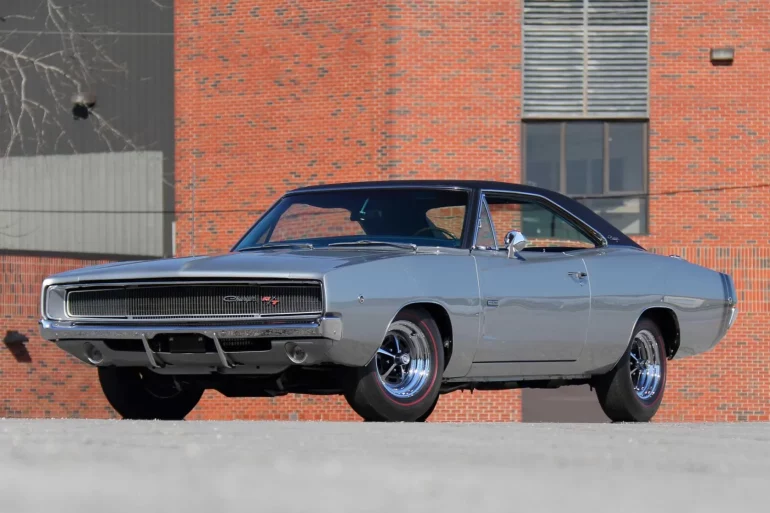
0 - 60: 4.8 seconds / Quarter Mile: 13.5 seconds
Summary
The 1968 Dodge Charger R/T Hemi is a legendary muscle car that embodies the raw power and aggressive styling of the late 1960s. Its imposing presence, with its long hood, fastback roofline, and hidden headlights, made it an instant icon on the streets and racetracks.
Under the hood, the Charger R/T Hemi boasted the legendary 426 Hemi V8 engine, a racing-derived powerhouse that churned out 425 horsepower and 490 lb-ft of torque. This engine, available with either a four-speed manual or a three-speed automatic transmission, propelled the Charger from 0 to 60 mph in a mere 4.8 seconds, a blistering pace for its time. It could also conquer the quarter-mile in 13.5 seconds at 105 mph, making it one of the fastest cars on the road.
But the Charger R/T Hemi wasn't just about straight-line speed. It also featured a heavy-duty suspension, wide tires, and powerful brakes that gave it impressive handling and stopping power for its size. The car's balanced chassis and precise steering made it surprisingly agile, allowing it to tackle corners with confidence.
The 1968 Dodge Charger R/T Hemi remains a highly sought-after collector's car, cherished by enthusiasts for its iconic design, legendary engine, and raw performance. It represents a golden era in American automotive history, when muscle cars ruled the streets and the racetrack.
7. 1967 Pontiac GTO Royal Bobcat 400 Coupe
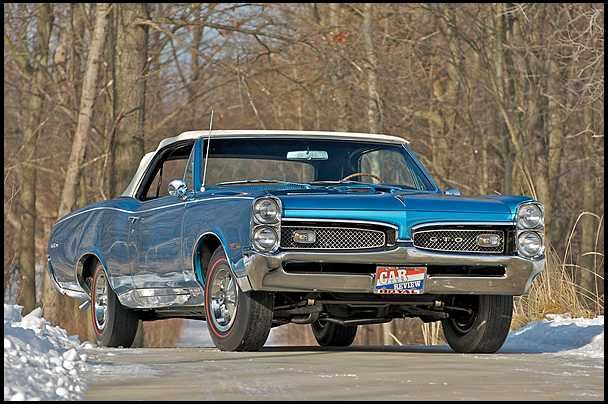
0 - 60: 4.9 seconds / Quarter Mile: 14.2 seconds
Summary
The 1967 Pontiac GTO Royal Bobcat 400 Coupe was a unique and powerful creation that pushed the boundaries of American muscle car performance. It wasn't a factory-backed model but rather a collaboration between Pontiac and Royal Pontiac, a dealership in Royal Oak, Michigan, known for its high-performance modifications.
At its heart was the standard 400 cubic inch V8 engine, but it was far from stock. Royal Pontiac's "Bobcat" kit included modifications like thinner head gaskets, larger carburetor jets, and recalibrated distributor timing, among other tweaks. These enhancements bumped the engine's output to an estimated 350-360 horsepower, a significant increase over the factory-rated 335 horsepower. While official performance figures are scarce, the Bobcat GTO was reputed to be incredibly quick, capable of running the quarter-mile in around 14.2 seconds, a remarkable feat for its time.
The Bobcat GTO wasn't just about raw power. It also received suspension upgrades and other performance enhancements to improve handling and responsiveness. While the extent of these modifications varied depending on the customer's desires and budget, the end result was a GTO that was both faster and more agile than its stock counterpart. The Bobcat GTO's rarity and performance potential have made it a highly sought-after collector's item, a testament to the ingenuity and passion of Royal Pontiac's performance team and the enduring appeal of the Pontiac GTO.
8. 1969 Plymouth Road Runner 426
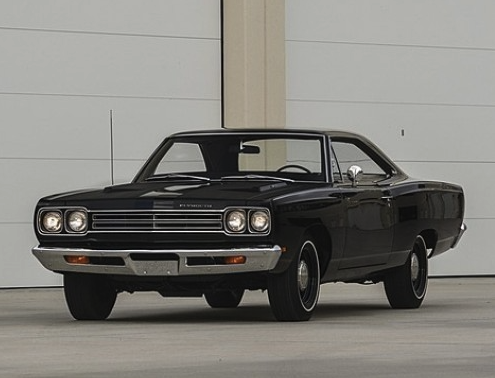
0 - 60: 5.0 seconds / Quarter Mile: 13.5 seconds
Summary
The 1969 Plymouth Road Runner 426 was a legendary muscle car that cemented its place in automotive history with its raw power and iconic design. It was a no-nonsense performance machine designed to dominate the drag strip while remaining affordable for the average enthusiast.
At the heart of its appeal was the legendary 426 Hemi V8 engine, a powerhouse that churned out a massive 425 horsepower and 490 lb-ft of torque. This monstrous engine, available with a four-speed manual or a TorqueFlite automatic transmission, propelled the Road Runner 426 from 0 to 60 mph in a blistering 5.0 seconds, making it one of the quickest cars of its era. It could also conquer the quarter-mile in around 13.5 seconds, leaving many competitors in its dust.
Beyond its straight-line speed, the Road Runner 426 also offered decent handling for a muscle car of its time. Its heavy-duty suspension, wide tires, and optional power brakes provided a level of control and stability that was surprising for a car with such immense power. Its distinctive "beep-beep" horn, inspired by the Looney Tunes character, added a playful touch to its otherwise aggressive persona.
The 1969 Plymouth Road Runner 426 remains a highly sought-after collector's car, cherished by enthusiasts for its iconic design, legendary engine, and raw performance. It represents a golden era in American automotive history, when muscle cars ruled the streets and the drag strip.
9. 1965 Shelby Cobra 289 Hardtop

0 - 60: 5.2 seconds / Quarter Mile: 13.7 seconds
Summary
The 1965 Shelby Cobra 289 Hardtop was a variant of the iconic Shelby Cobra, featuring a fixed roof for enhanced comfort and aerodynamics. While not as raw as its roadster counterpart, the hardtop retained the Cobra's potent performance and thrilling driving experience.
Under the hood, the 289 Hardtop housed a 289 cubic inch (4.7-liter) Ford V8 engine, which produced a respectable 271 horsepower and 312 lb-ft of torque. This power, paired with a four-speed manual transmission, propelled the Cobra 289 Hardtop from 0 to 60 mph in around 5.2 seconds, reaching a top speed of 140 mph. While not as ferocious as the later 427 models, the 289 Hardtop still offered impressive performance for its time and a visceral driving experience that captivated enthusiasts.
The hardtop's performance wasn't just about straight-line speed. It shared the same lightweight chassis and agile handling characteristics as the roadster, making it a joy to drive on winding roads. The fixed roof also improved the car's aerodynamics, reducing drag and improving high-speed stability. Inside the cabin, the 289 Hardtop offered a more comfortable and refined experience than the roadster, with improved noise insulation and a more luxurious interior. However, it still maintained the driver-focused nature of the Cobra, with supportive seats and a simple, uncluttered dashboard.
The 1965 Shelby Cobra 289 Hardtop was a unique and desirable variant of the iconic sports car. Its combination of performance, style, and comfort made it a popular choice among enthusiasts who wanted a Cobra they could enjoy on the road as well as the track.
10. 1969 Chevrolet Corvette 427
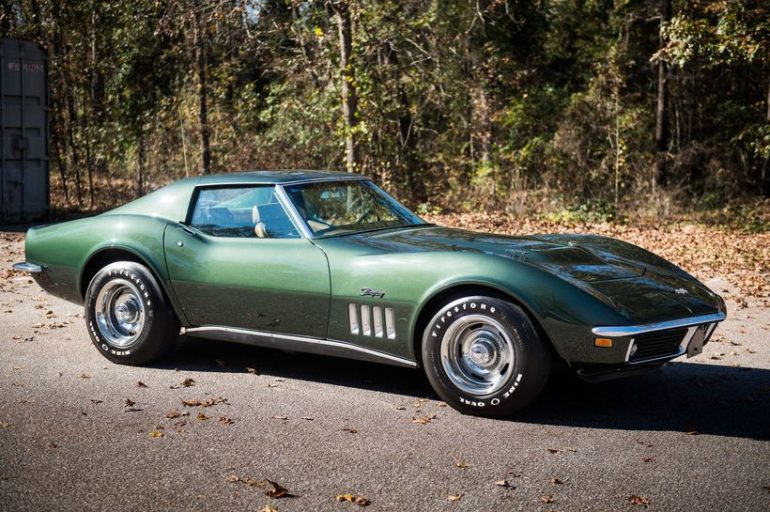
0 - 60: 5.2 seconds / Quarter Mile: 13.8 seconds
Summary
The 1969 Chevrolet Corvette 427 was a true American icon, a symbol of power and performance that captured the hearts of enthusiasts and cemented its place in automotive history. The Stingray body style, with its long nose, short deck, and curvaceous lines, was a masterpiece of design, while the rumbling V8 engine under the hood promised an exhilarating driving experience.
Available in three different configurations, the 427 cubic inch (7.0-liter) V8 engine was the pinnacle of performance for the 1969 Corvette. The base model produced a healthy 390 horsepower, while the L36 and L71 models offered 400 and 435 horsepower, respectively. The L71, equipped with triple two-barrel carburetors, solid lifters, and high compression, was a true beast, capable of propelling the Corvette from 0 to 60 mph in around 5.2 seconds and conquering the quarter-mile in around 13.8 seconds.
The 1969 Corvette 427 wasn't just about brute force. It also boasted a four-wheel independent suspension, four-wheel disc brakes, and a positraction rear axle, providing impressive handling and agility for its time. While its ride was firm, it was well-balanced and predictable, allowing drivers to push the car to its limits with confidence. The 1969 Chevrolet Corvette 427 remains a legendary sports car, sought after by collectors and enthusiasts for its timeless design, raw power, and the visceral driving experience it delivers. It's a testament to Chevrolet's engineering prowess and a reminder of a time when American muscle cars ruled the road.
11. 1969 Chevrolet Camaro ZL-1
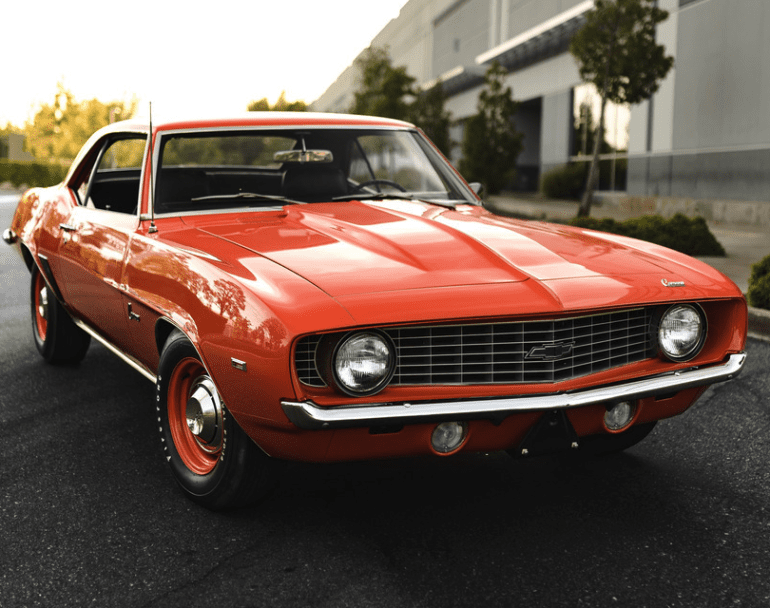
0 - 60: 5.2 seconds / Quarter Mile: 11.6 seconds
Summary
The 1969 Chevrolet Camaro ZL-1 is a legendary muscle car that holds a special place in automotive history as one of the rarest and most powerful Camaros ever produced. Designed for drag racing dominance, this limited-edition model was built with a focus on performance and lightweight construction.
Under the hood, the ZL-1 was equipped with an all-aluminum 427 cubic inch (7.0-liter) V8 engine, a racing-derived powerhouse that officially produced 430 horsepower but was rumored to have an actual output closer to 500 horsepower. This engine, paired with a heavy-duty transmission and a beefy rear axle, made the ZL-1 a force to be reckoned with on the drag strip. With proper tuning and modifications, it could easily achieve quarter-mile times in the low 11s, a remarkable feat for its time.
The ZL-1's performance wasn't just about straight-line speed. It also featured upgraded suspension components, including heavy-duty springs and shocks, as well as a larger sway bar and power disc brakes. While its primary focus was on drag racing, these upgrades provided improved handling and braking, making it more than just a one-trick pony.
The 1969 Chevrolet Camaro ZL-1 was a rare breed, with only 69 examples ever produced. Its limited production run, combined with its legendary performance and racing pedigree, has made it a highly sought-after collector's car. Its legacy lives on as a testament to Chevrolet's commitment to performance and the golden age of American muscle cars.


